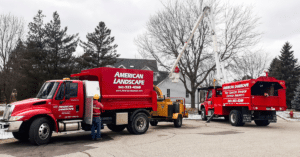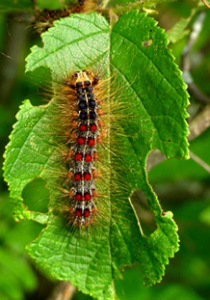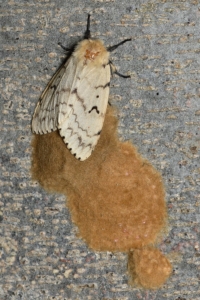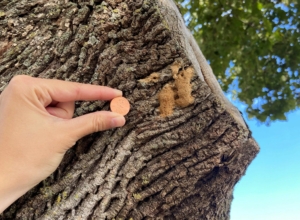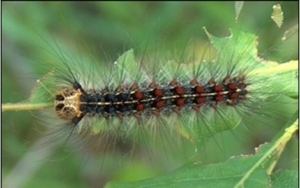When to Call For Certified Arborist Tree Services: 5 Signs Your Trees Need Expert Help
A late summer walk along Nagawicka Road in Delafield offers a perfect view of Lake Country’s tree canopy—towering red oaks and sugar maples casting dappled shade over quiet trails and shoreline cottages. These mature trees aren’t just beautiful; they’re a reflection of careful planning and expert care that’s become second nature in this part of Wisconsin.
These trees didn’t thrive by chance—behind their health is consistent attention from professionals who understand what each leaf drop or cracked limb might mean. For many homeowners, knowing when to bring in that level of expertise can make the difference between a healthy tree and a costly removal.
From subtle signs of disease to sudden structural shifts, certain tree issues call for more than routine landscaping—they call for the insight of a certified arborist. Knowing what to watch for—and why certified arborists are uniquely equipped to help—can empower you to protect your trees before problems take root.
What Makes a Certified Arborist Different?
Certified arborists are tree care professionals trained to understand trees’ biology, structure, and needs. To become certified through the International Society of Arboriculture (ISA), they must pass a comprehensive exam, demonstrate real-world experience, and commit to ongoing education. This ensures they’re knowledgeable and current with the latest industry standards in safety, diagnosis, and treatment.
Unlike general landscapers who may offer tree trimming as part of broader services, certified arborists specialize in trees exclusively. They bring a scientific, safety-conscious approach to every job, using proper techniques to protect tree health and prevent long-term damage.
When the health or safety of a tree is uncertain, a certified arborist brings clarity and confidence to the care plan.
Key Benefits of Obtaining Certified Arborist Services
Hiring a certified arborist isn’t just about fixing visible problems—it’s about protecting your trees with expert insight and proactive care. Their training and hands-on experience allow them to make informed decisions that benefit your landscape today and well into the future. Here’s what you can expect when you choose to work with one:
- Expert Diagnosis – Trained eyes can detect early signs of disease, insect infestation, or structural issues before they become serious.
- Safe Pruning and Removal – Proper techniques reduce the risk of injury, property damage, or stress to the tree.
- Long-Term Tree Health Management – Preventative care strategies help trees thrive year after year.
- Local Knowledge – Familiarity with Wisconsin’s native species, soil conditions, and seasonal stressors improves outcomes.
- Trusted Professionalism – Certification demonstrates a commitment to ethical, expert care backed by industry standards.
5 Signs You Need Certified Arborist Services
Even healthy-looking trees can hide serious issues beneath the surface. Recognizing warning signs early can help prevent damage to your property and save the tree itself. Here are five clear indicators that it’s time to call in a certified arborist:
1. Dead or Hanging Branches
Dead or broken limbs are one of the most visible—and dangerous—signs of a struggling tree. These branches can fall unexpectedly, especially during storms or high winds, posing a risk to people, pets, and property.
A certified arborist can assess whether pruning or removal is necessary and ensure it’s done safely.
2. Visible Tree Decay or Cavities
Signs of internal decay—such as mushrooms at the base, hollow spots, or open cavities—can indicate structural weakness. These issues may not affect the entire tree immediately, but can quickly spread if not addressed.
Arborists use specialized tools and techniques to evaluate internal damage and recommend a treatment plan.
3. Pest Infestation
Tiny holes in bark, sawdust at the base, or unusual leaf loss can signal insect activity. Left unchecked, pests like emerald ash borers or aphids can quickly compromise the tree’s health.
Certified arborists are trained to identify specific pests and implement targeted, environmentally responsible treatments.
4. Leaning Trunks or Uprooted Roots
A tree that suddenly begins to lean or shows signs of root exposure may be suffering from compromised stability. Storms, soil erosion, or disease can cause this.
A certified arborist can determine whether the tree can be braced or if removal is the safest option to avoid collapse.
5. Unexplained Leaf Loss or Discoloration
If your tree begins losing leaves out of season or develops patches of yellowing or browning, it may be reacting to stress, nutrient deficiencies, or disease. These symptoms are often early warning signs, and a certified arborist can identify them before they escalate, usually making the difference between recovery and decline.
Trust American Landscape for Certified Arborist Services
Healthy trees are vital to your property’s beauty and safety, but recognizing when they need professional care isn’t always obvious. Dead limbs, pest damage, or sudden leaf loss are signs that often point to deeper issues that require expert attention.
Certified arborists bring the training and experience needed to diagnose and resolve tree problems safely and effectively. Unlike general landscapers, they follow industry standards to protect your trees and property.
At American Landscape, our ISA-certified arborists are committed to preserving the health and longevity of your landscape. Don’t wait for a small issue to become a serious hazard.
Contact us today to schedule a professional tree assessment.


